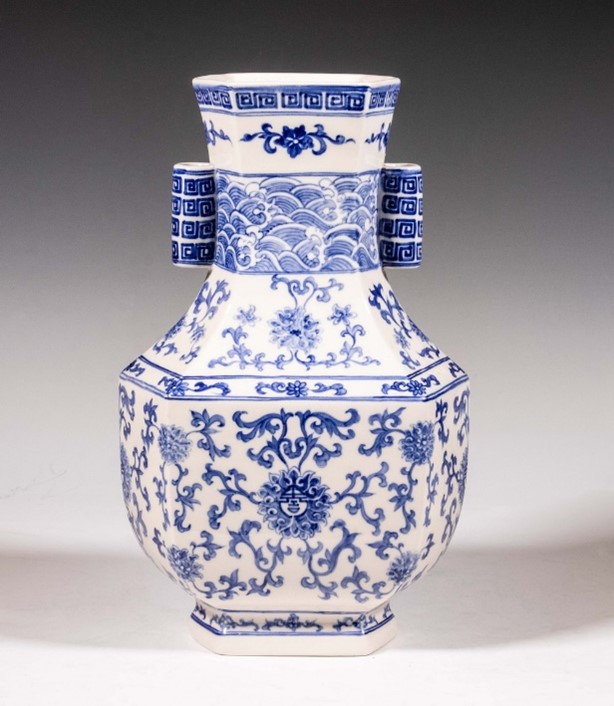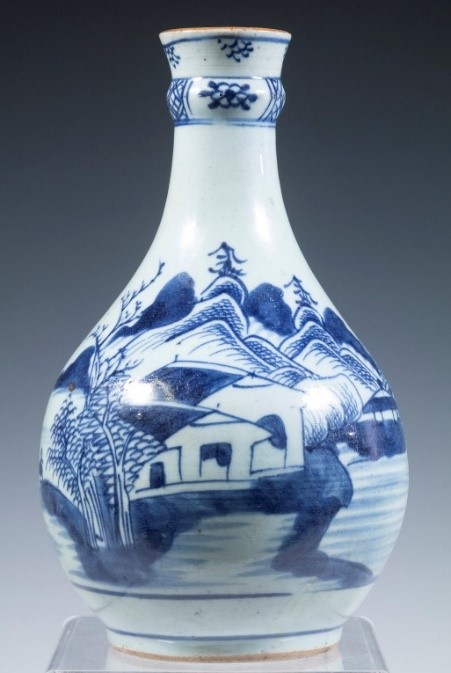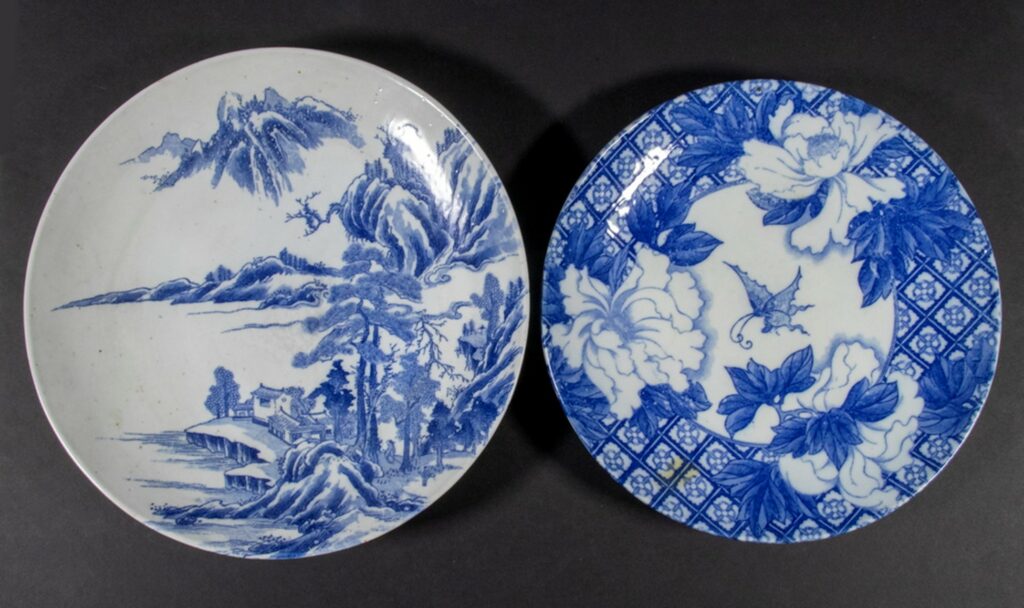
The distinctive pattern of blue and white porcelain has become a staple over time. Delicate blue patterns drawn on to the surface of white porcelain is common to find not only in our auctions, but around the world in museums, private collections, and modern designs.
Lot 6139 from Eastern Elegance, a Chinese Hexagonal Hu Vase, est. $300-400
The origin of the designs comes from the use of a very specific shade of blue – cobalt blue. Islamic and Chinese trade was a growing common practice in during the Yuan era, giving opportunity to refine the process of making blue and white porcelain. The practice of this pottery had been around for a hundred years during, appearing first during the Tang and Song eras. However, the means for creating a sound firing process were not yet available due to the lack of technology and the scarcity of cobalt ore. But during the Yuan era, there was an uptick in Cobalt Blue ore found in Persia as well as Samarra Blue and Sumatra Blue. Meanwhile, over in the town of Jingdezhen, potters had added kaolin clay (an essential ingredient in making porcelain even now) to their practice to create the pure white we know as porcelain today.
Lot 6168 in Eastern Elegance, Chinese Bottle Form Vase, est. $600-800

Layers of the iron rich cobalt blue were used to create a variety of shades resulting in a striking contrast between porcelain and pigment. Some artists mix in differing tones of blue, called Fenshui, making light and deep blues for further experimentation in the practice. While other artists created pieces with delicate and complex line work, others utilized the white negative space and painted the rest of the piece blue. Styles vary as the pieces were made for markets in the Middle East, Korea, and even Africa, resulting in culture creating their own version of the practice, such as Japan. While the trend spread throughout China and the world, it was believed that the originating town of Jingdezhen created the best. The practice had its peak in the 1700s, however Britian’s “Chinamania” resulted in utilization of the iconic blue and white during the Aestheticism movement of the 1850s and 60s.

Lot 6228 in Eastern Elegance, (2) Japanese Blue and White Chargers, est $200-400
Blue and white porcelain not only showcased signature colors, but motifs and themes as well. The blue and white practice had a partial religious component as the Mongols recognized their ancestors as the blue wolf and white doe. Some also say the blue color symbolizes heaven while white means purity. The details in the decor of the ware also give insight into its purpose. For example, if there are two mandarin ducks on the piece, this symbolizes marital bliss. Others such as a peach are for longevity, a lotus for mental and spiritual purity, and a parasol for royalty.
You will find many white and blue porcelain pieces in our upcoming ‘Eastern Elegance’ online discovery auction on March 20, 2024.
